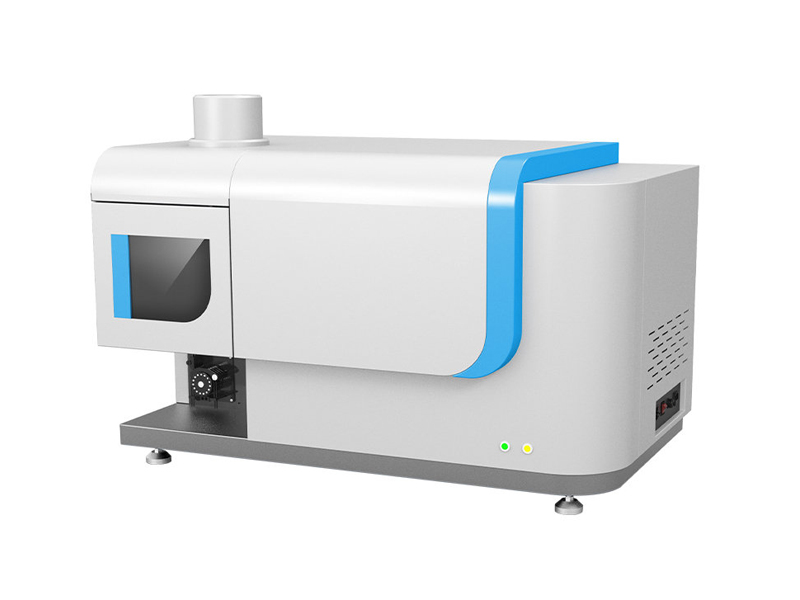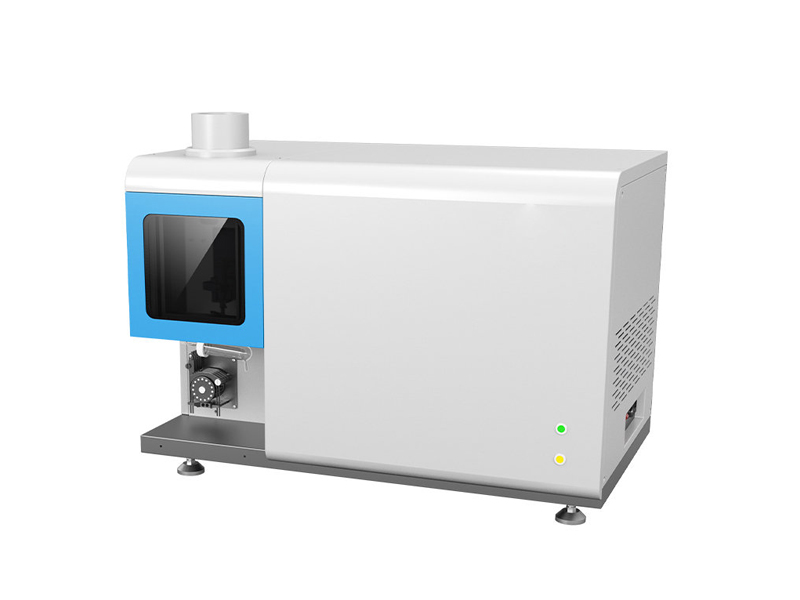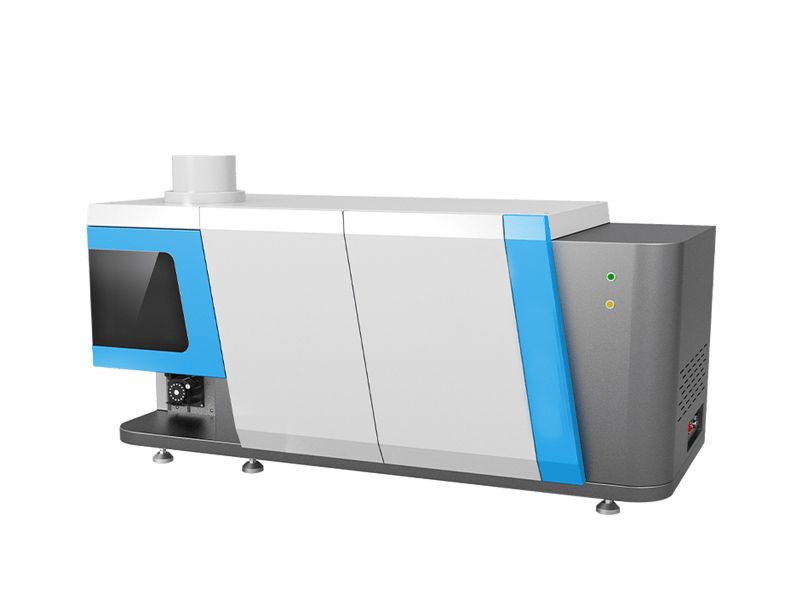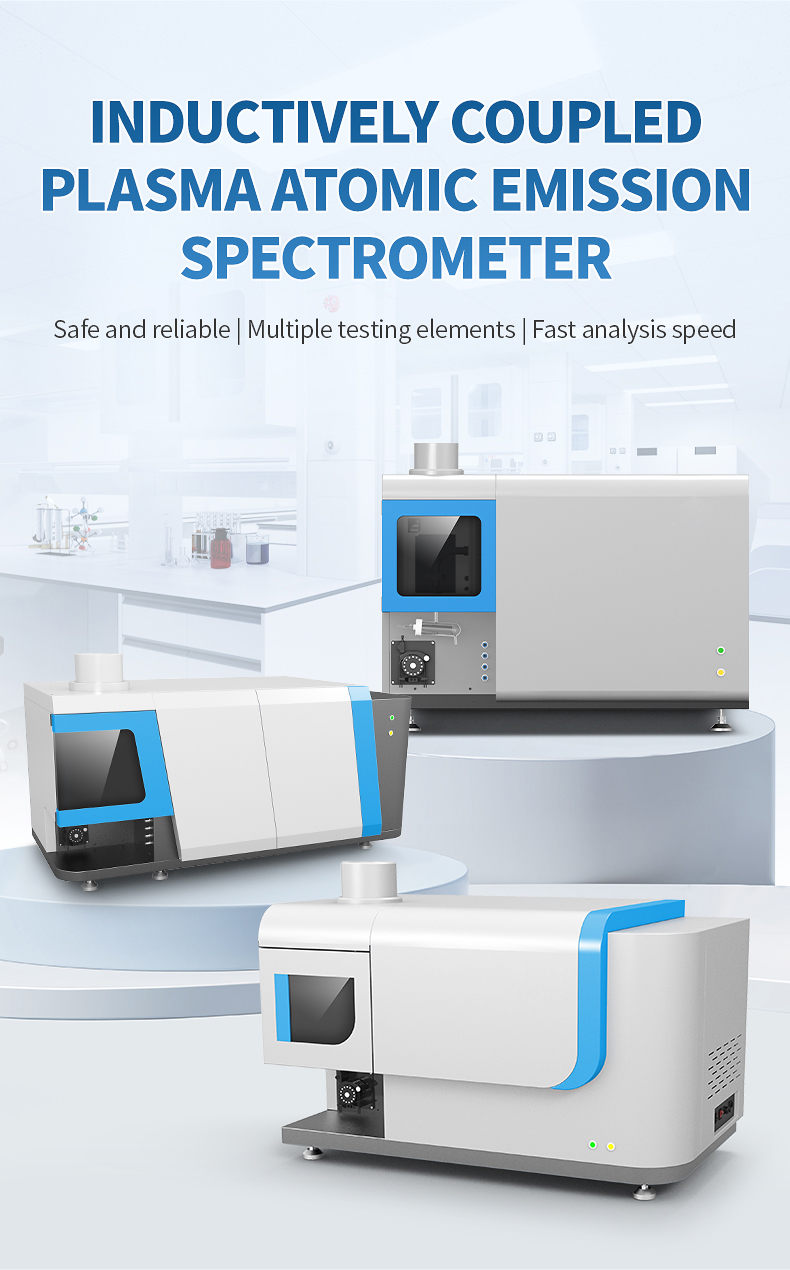
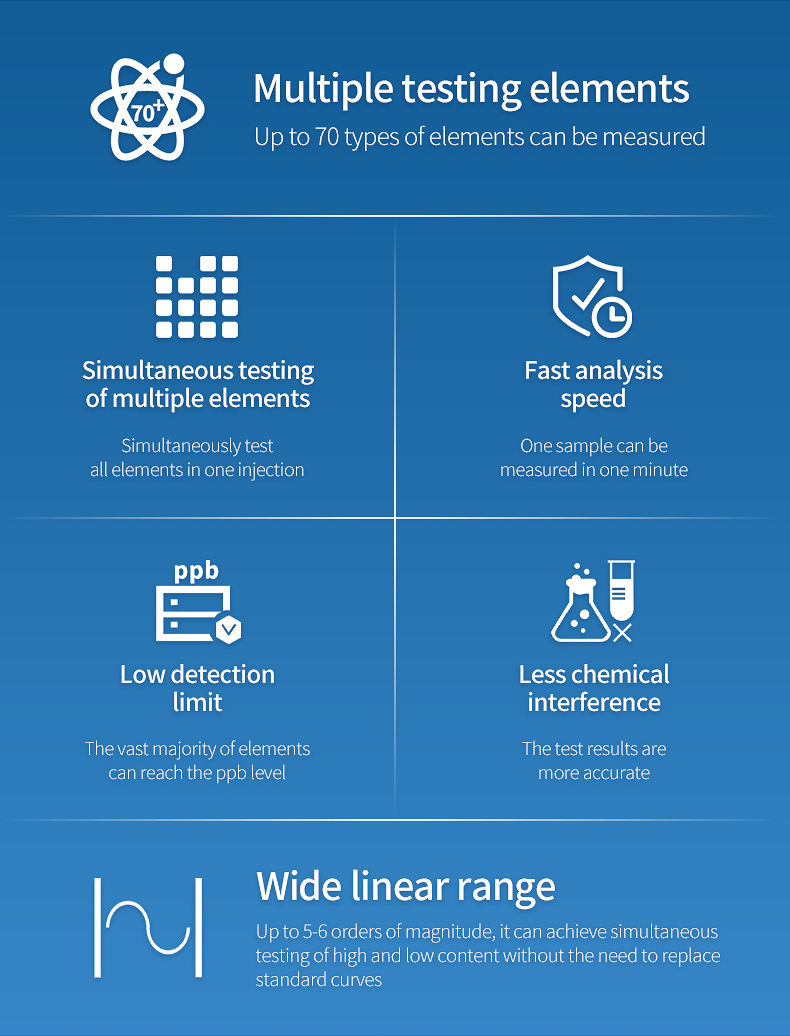

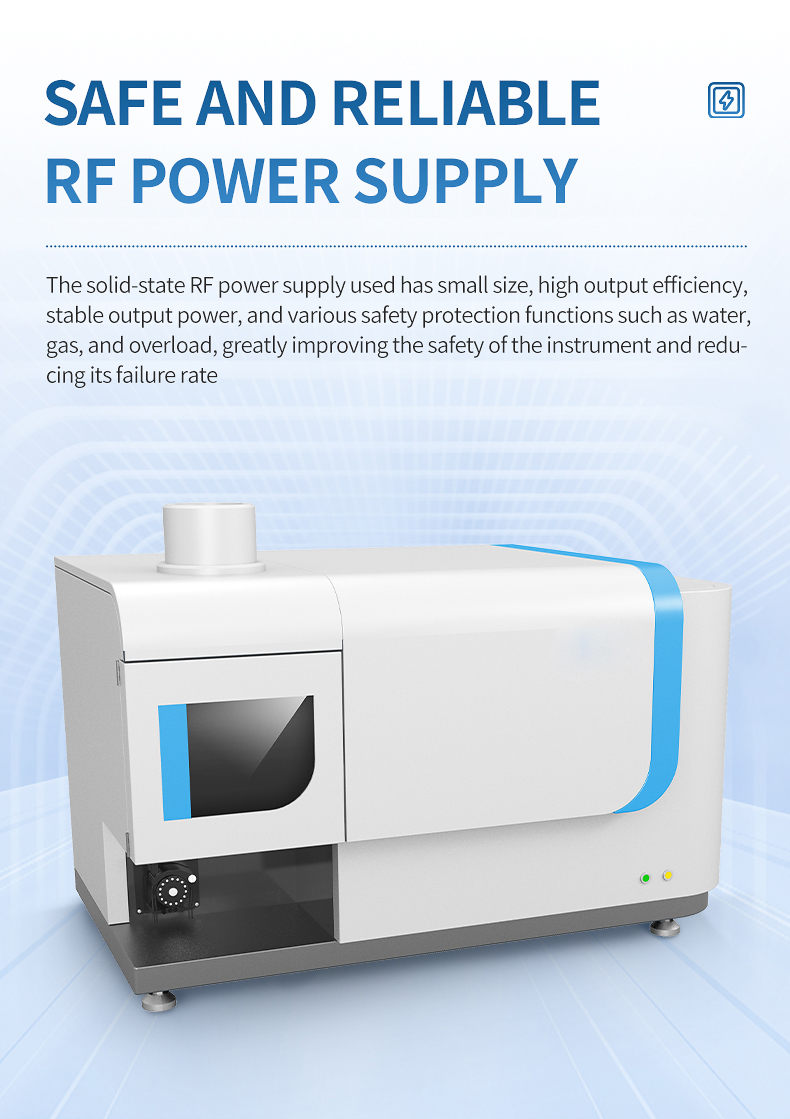
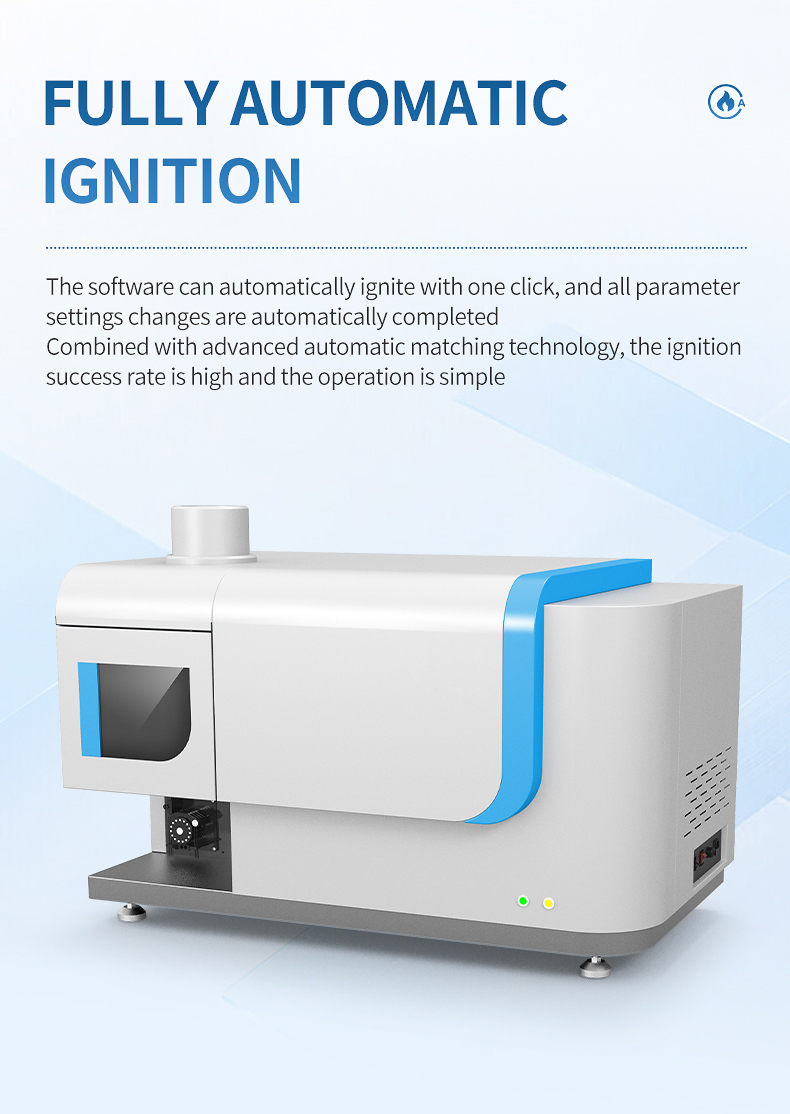
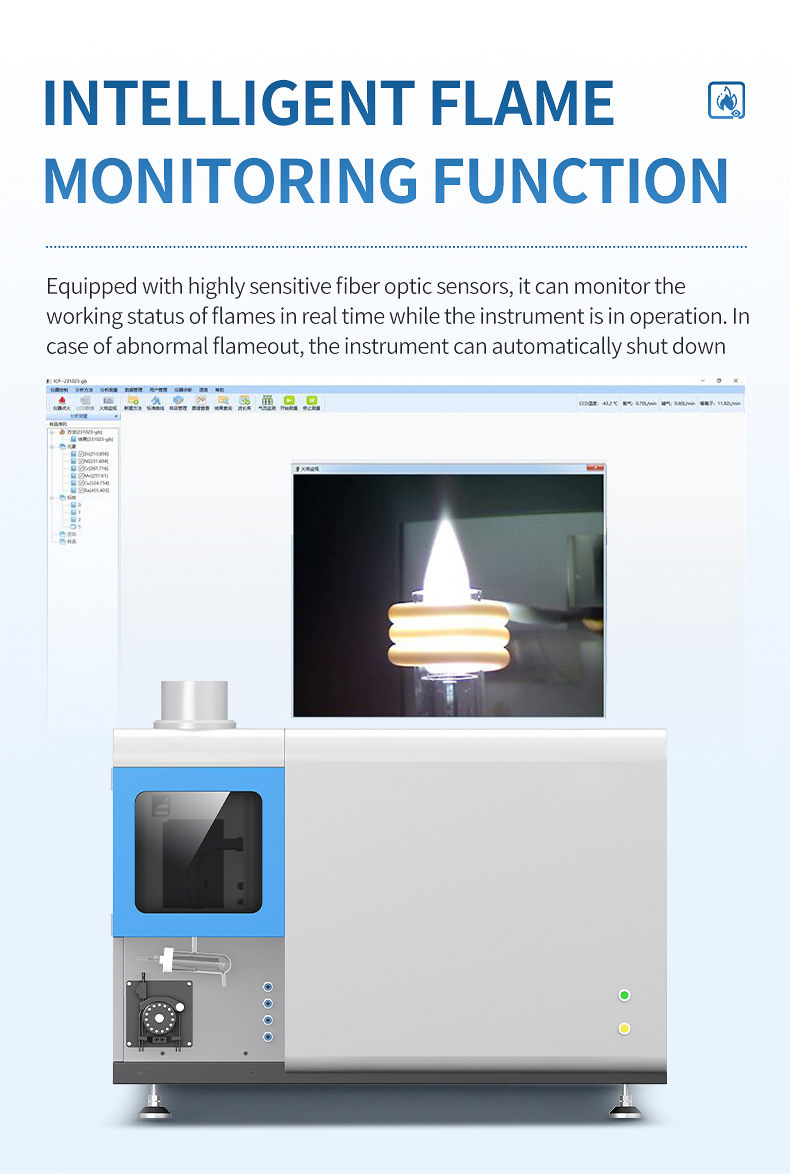
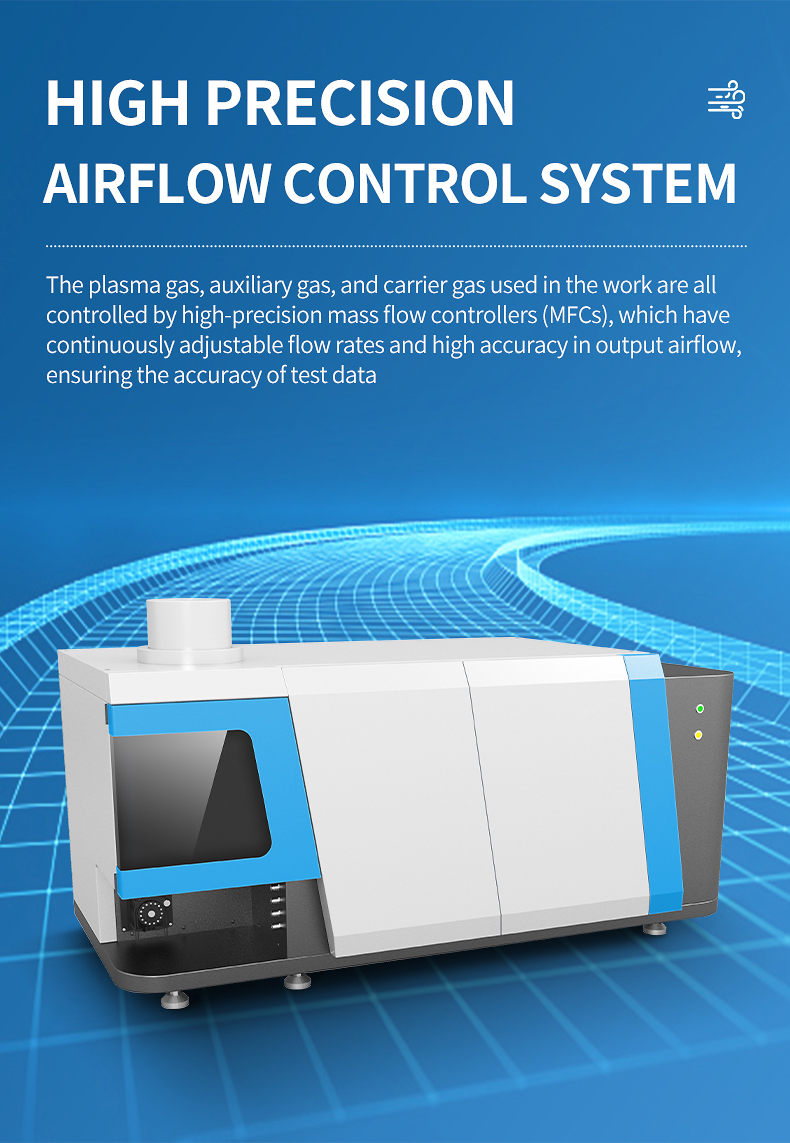
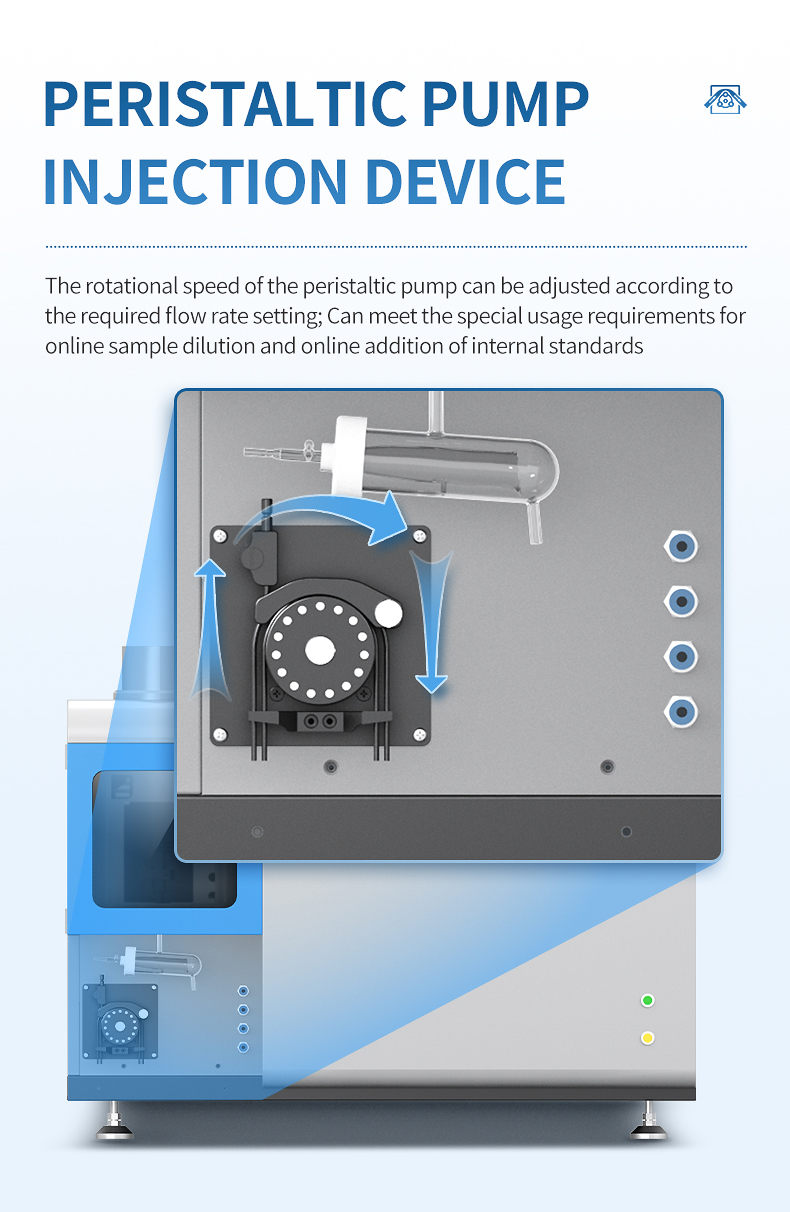
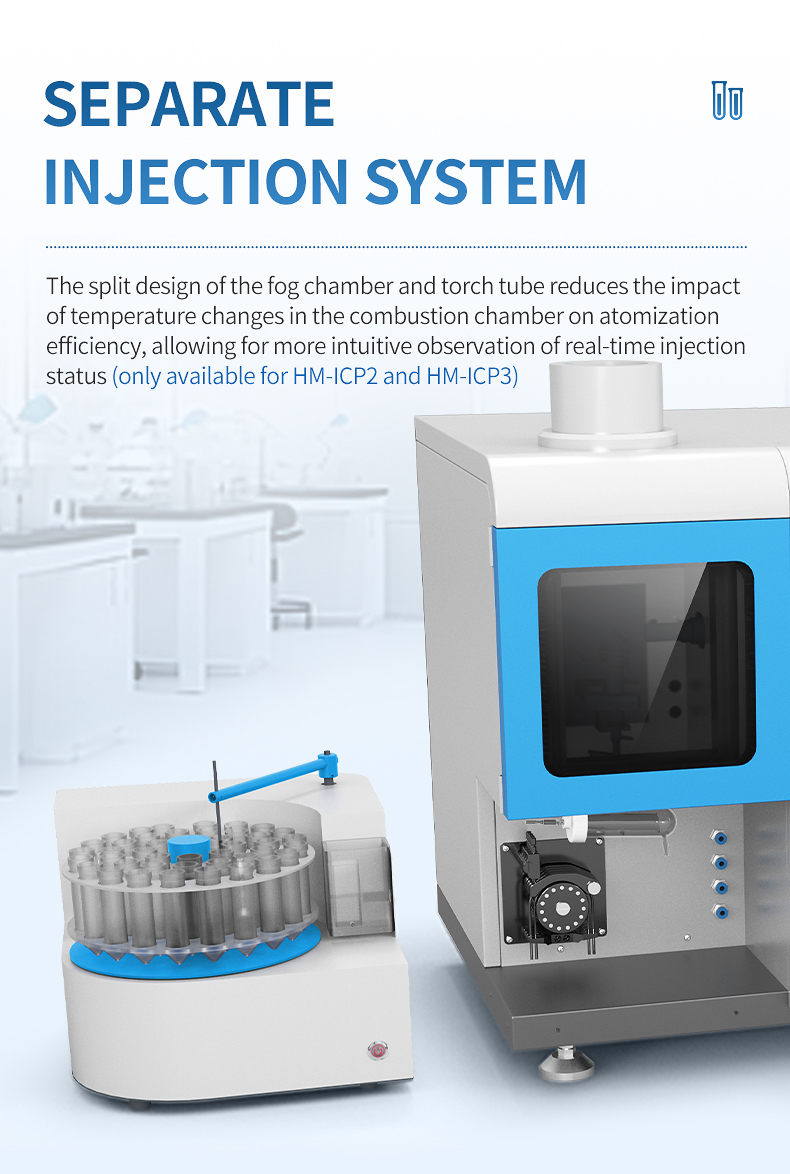
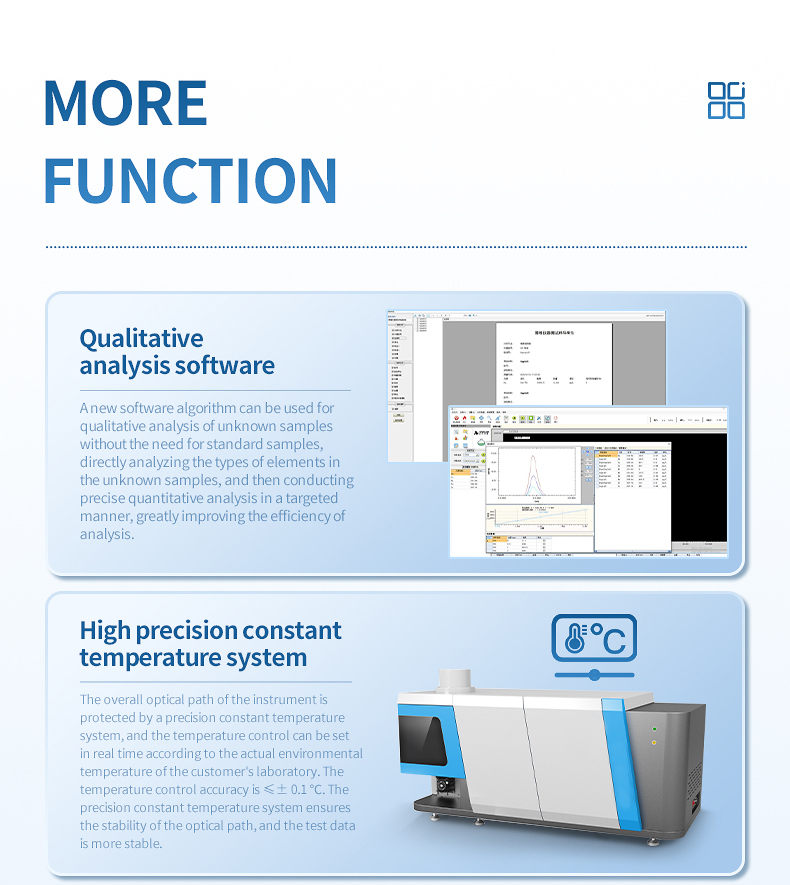
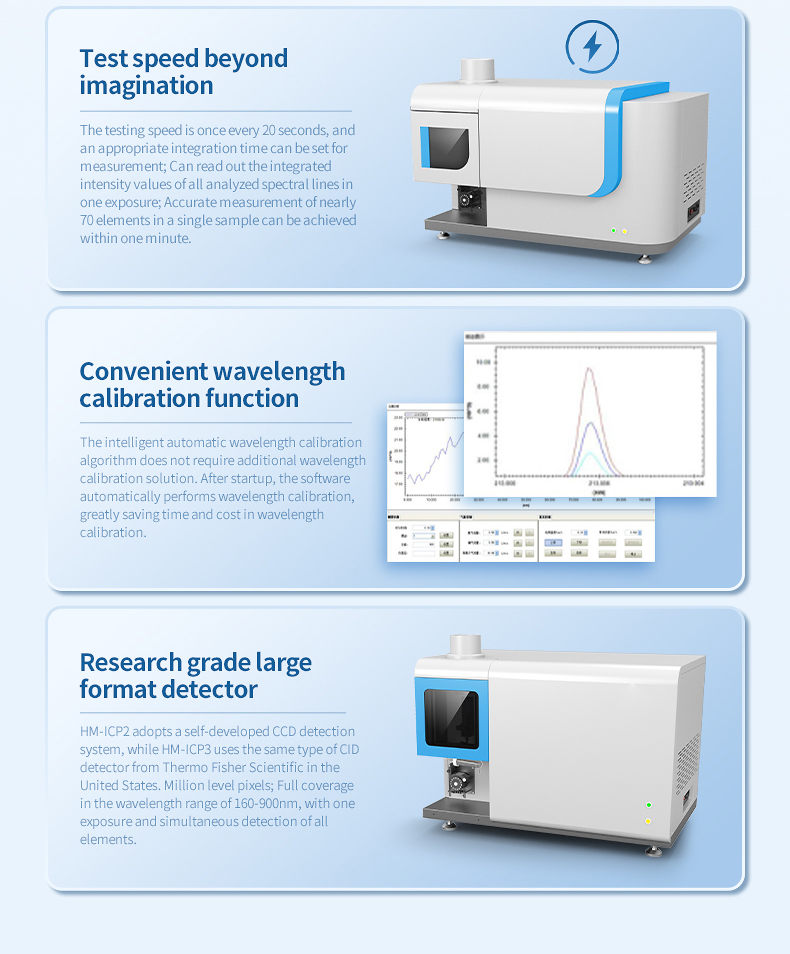
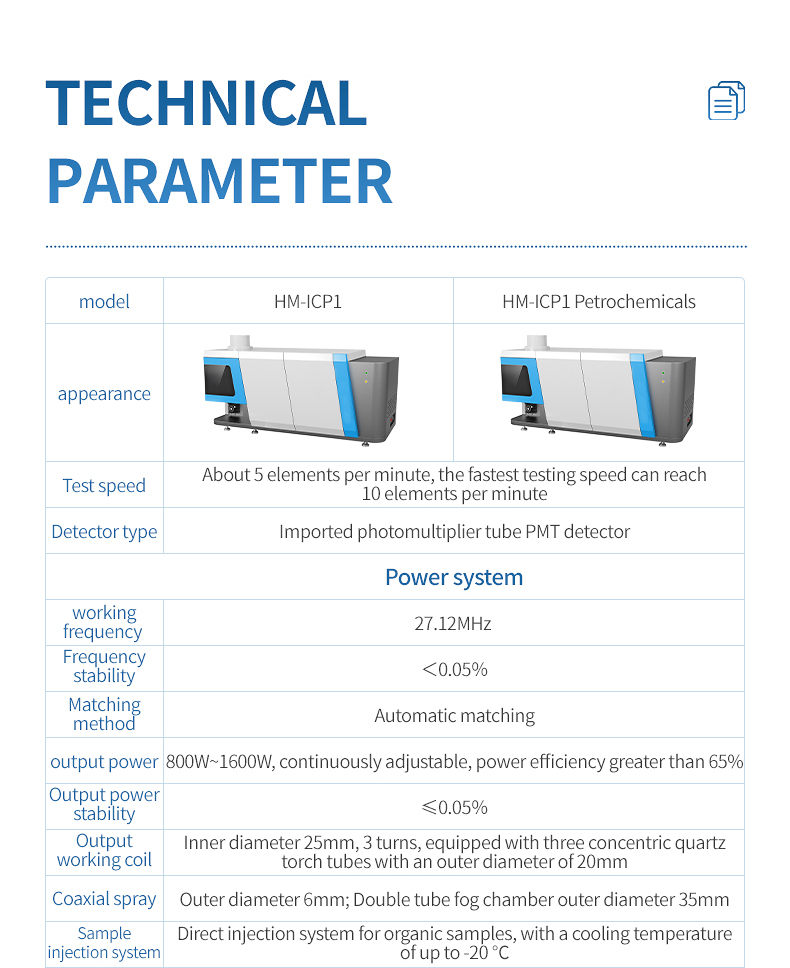
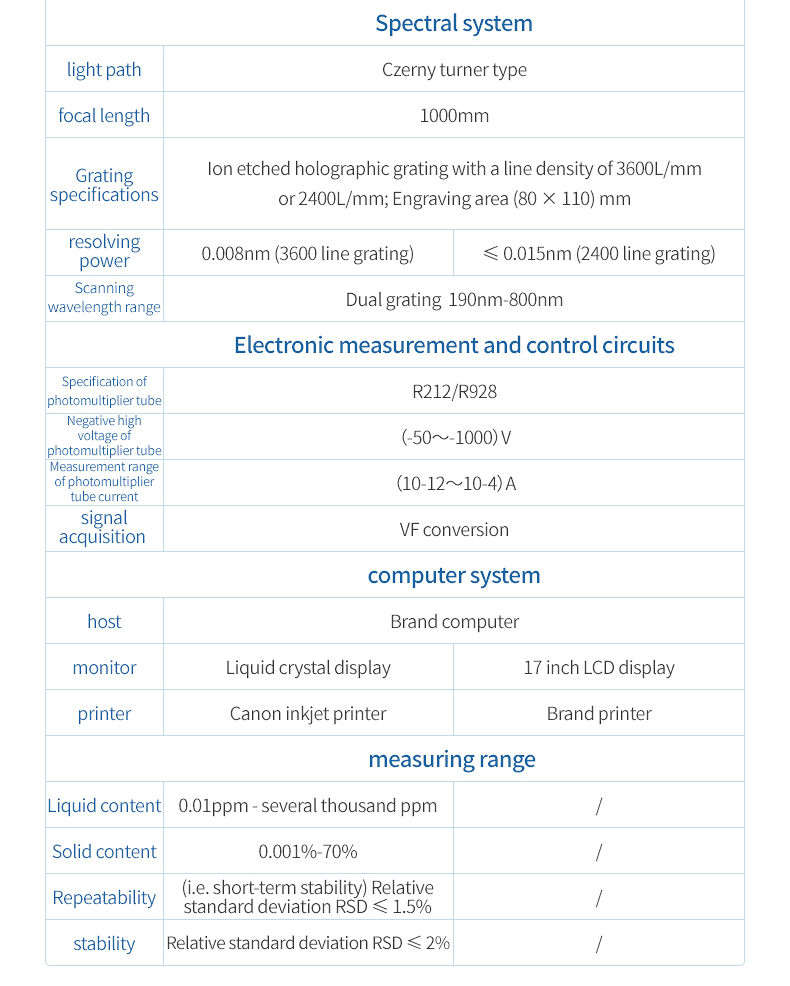
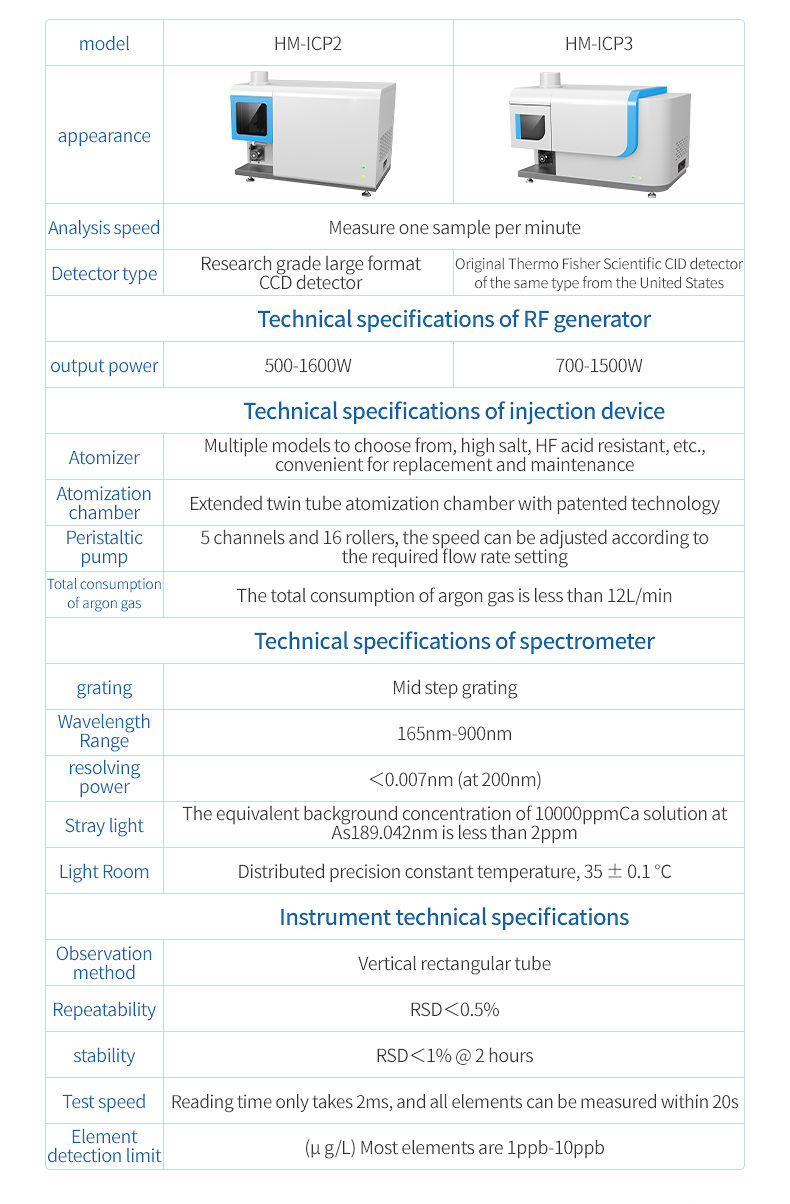
Product Introduction:
The full spectrum direct reading inductively coupled plasma emission spectrometer is an excellent full spectrum direct reading ICP spectrometer used to determine the content of constant, trace, and trace elements in different substances. It can be used for qualitative, semi quantitative, and precise quantitative analysis of elements in samples, with a detection limit of up to one billionth.
At present, instruments are widely used in various fields such as environmental protection, food safety, geology and mineral resources, metallurgy, non-ferrous metals, rare earths, chemical engineering, clinical medicine, petroleum products, semiconductors, and agricultural research.
Performance characteristics:
1. Safe and reliable solid-state RF power supply
The RF power supply used in the instrument has small size, high output efficiency, stable output power, and various safety protection functions such as water, gas, and overload, greatly improving the safety of the instrument and reducing its failure rate.
2. High degree of instrument automation
The automation level of the instrument is extremely high, and all operations except for the power switch are completed by software. Intelligent software that can provide real-time feedback and information prompts for various operations.
3. Fully automatic ignition and matching technology
The software can automatically ignite with one click, and all parameter settings changes are automatically completed. Combined with advanced automatic matching technology, the ignition success rate is high and the operation is simple.
4. Intelligent flame monitoring function
The instrument is equipped with a highly sensitive fiber optic sensor, which can monitor the working condition of the flame in real time while the instrument is in operation. In case of abnormal flameout, the instrument can be automatically turned off.
5. Separate injection system
The split design of the fog chamber and torch tube reduces the impact of temperature changes in the combustion chamber on atomization efficiency, allowing for more intuitive observation of real-time injection status. Combined with patented technology, the extended fog chamber effectively separates gas and liquid, reducing the interference of water vapor.
6. Qualitative analysis software
A new software algorithm can be used for qualitative analysis of unknown samples without the need for standard samples, directly analyzing the types of elements in the unknown samples, and then conducting precise quantitative analysis in a targeted manner, greatly improving the efficiency of analysis.
7. High precision airflow control system
The plasma gas, auxiliary gas, and carrier gas used in the operation of the instrument are all controlled by high-precision mass flow controllers (MFCs), which have continuously adjustable flow rates and high accuracy in outputting airflow, ensuring the accuracy of test data.
8. Peristaltic pump injection device
The peristaltic pump is designed with 5 channels and 16 rotors, and the rotational speed of the peristaltic pump can be adjusted according to the required flow rate; Can meet the special usage requirements of customers for online sample dilution and online addition of internal standards.
9. Testing speed beyond imagination
The testing speed is once every 20 seconds, and an appropriate integration time can be set for measurement; It is possible to read out the integrated intensity values of all analyzed spectral lines in one exposure; Accurate measurement of nearly 70 elements in a single sample can be achieved within one minute.
10. Research grade large format CID detector
Adopting the same type of CID detector from American original Thermo Fisher Scientific, with millions of pixels; Full coverage of 165-900nm wavelength range, with one exposure and simultaneous detection of all elements.
11. Convenient wavelength calibration function
The intelligent automatic wavelength calibration algorithm does not require additional wavelength calibration solution. After startup, the software automatically performs wavelength calibration, greatly saving time and cost in wavelength calibration.
12. Precise spectroscopic system
By using a mid step grating combined with prism cross dispersion spectroscopy, precise optical design can achieve maximum luminous flux and excellent spectral resolution; No moving optical components, ensuring good repeatability and long-term stability; The ultra-low stray light device, combined with unique optical design, greatly reduces the interference of background light and further lowers the detection limit of the instrument.
Instrument advantages:
1. There are many testing elements, and up to 72 types of elements can be tested.
2. Multi element simultaneous testing, testing all elements simultaneously in one injection.
3. Fast analysis speed, measuring one sample per minute.
4. The detection limit is low, and the vast majority of elements can reach the ppb level.
5. The linear range is wide, up to 5-6 orders of magnitude, allowing for simultaneous testing of high and low content without the need to replace standard curves.
6. Less chemical interference, more accurate test results.
Technical parameters:
1. Technical specifications of RF generator
Output power: 700-1500W
2. Technical specifications of injection device
Efficient imported atomizer: multiple models to choose from, high salt, HF resistant, etc.
Atomization chamber: Extended double tube atomization chamber with patented technology.
Peristaltic pump: 5 channels with 16 rollers, the speed can be adjusted according to the required flow rate, and it has patented technology.
Total argon consumption: The total consumption of argon is less than 12L/min.
3. Technical specifications of spectrometer
Grating: Medium step grating
Wavelength range: 165nm-900nm
Resolution:< 0.007nm@200nm
Scattered light: Equivalent background concentration of 10000ppmCa solution at As189.042nm<2ppm
Light room: distributed precision constant temperature, 35 ± 0.1 ℃
4. Technical specifications of detection device
Detector type: CID
5. Instrument technical specifications
Observation method: Vertical observation
Repeatability: RSD<0.5%
Stability: RSD<1% @ 2 hours
Testing speed: The reading time for a single spectral line CID is only 2ms, and all elements can be measured within 20s
Element detection limit (μ g/L): Most elements are 1ppb-10ppb
Application areas:
environmental protection industry
Accurately and quickly analyze the elemental composition of environmental samples (water quality, soil, atmosphere) to safeguard human daily life.
Geological and mining industry
Accurate and rapid analysis of mineral content has strict guiding significance for early mining, mid-term control, and later restoration of mines.
Metallurgical industry
The analysis of product ingredients can provide real-time control over the production process and technology, ensuring the ingredient content of the final product and meeting the quality requirements of the final product.
Toy and consumer goods industry
Analyze heavy metal elements in children's toys and consumer goods to ensure that the content of heavy metal elements in the produced products is within the controlled range, allowing parents and children to feel more at ease.
Precious metal industry
The content of impurity elements in precious metals directly affects the purity and performance of precious metals, and determines the value of precious metals themselves. Accurately determining the content of low impurity elements is extremely important for the precious metal industry.
Rare earth industry
The value and use of rare earth elements are increasingly favored, and the application range of high-purity rare earth elements is also becoming wider. The analysis of impurity elements is particularly important, and the accuracy and efficiency required for rare earth testing can be fully met.
Article address:https://www.spectrometer.top/pro9/40.html
- Previous: Atomic Emission Spectrometer
- Next: no more

 Current
location:
Current
location: